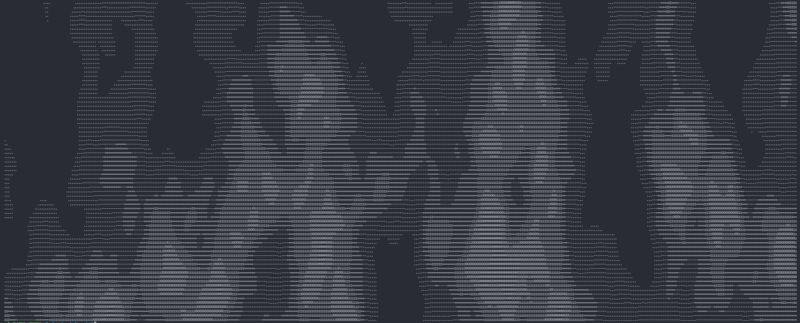2 releases (1 stable)
| 1.0.3 | Jan 10, 2022 |
|---|---|
| 0.1.0 | Jan 10, 2022 |
#1876 in Algorithms
37 downloads per month
23KB
297 lines
Simplex Noise Generator and Fractal Brownian Motion algorithm.
Import with use simple_simplex::NoiseConfig;
Simple-Simplex is a library for generating values procedurally. This is called noise.
Simple-Simplex also applies what is called Fractal Brownian Motion, or FBM to generated values.
When many of these noise values are generated and put into an array/list/vector, they are called noisemaps. Noisemaps can be used for many things,
such as generating images, terrain in games like No Mans Sky / Minecraft, particle effects, digital art, or even procedurally generated dungeons.
Simple-Simplex supports..
-
generating noise values, applying fractal brownian motion, and converting the output into a range.
-
generating noise values without fractal brownian motion or without a range.
-
outputting Simplex Noise / FBM values directly to terminal in ascii with the
output()andoutput_1d()methods.
Below: Example of the output() method, sent in the VS Code terminal.

Below: Example of the output_1d() method, sent in the VS Code Terminal.

output() and output_1d() allow users to understand what their final noisemap will look like for a given noise.
Quick-Start Guide
If you do not already understand the terms FBM, Fractal Brownian Motion, noise, Simplex Noise, or noisemap, I suggest you read
TERMSNDEF.md in /docs.
This section will help you get started using simple-simplex
1: Create a Noise Configuration.
simple-simplex uses what is called a Noise Configuration. See the example below:
use simple_simplex::NoiseConfig;
let config: NoiseConfig = NoiseConfig::new(
3, // Octaves
0.01, // X-Frequency
0.01, // Y-Frequency
0.05, // Amplitude
2.5, // Lacunarity
0.5, // Gain
(0.0, 255.0), // range
4201337 // seed
);
In the above image, we are creating a new NoiseConfig. a NoiseConfig contains data about how FBM will behave. For a more in depth explanation of how these variable behave, see NOISECONFIG.md in /docs.
2: Generate values.
Once a Noise Configuration has been created, you're ready to start generating values!
There are a few methods available to you right off the bat:
-
config.generate_raw():Generates a raw simplex noise value. By raw we mean that FBM is not applied to the result. This is not converted into a range.
-
config.generate_raw_range():Generates a raw simplex noise value. This value does not have FBM applied. The value is converted to the range specified in the Noise Configuration.
-
config.generate_range():Generates an FBM-applied simplex noise value. This means FBM is applied. This value is converted into the specified range.
-
config.generate_rangeless():Generates an FBM-applied simplex noise value. This means FBM is applied. This value is not converted into the specified range.
-
config.analyze():Generates a large amount of values and prints data about the configuration's output to terminal. Currently feature-incomplete. Prints:
- Maximum Value data.
- Minimum Value data.
-
config.output():Generates and outputs a noisemap to terminal. Note the
sizevariable refers to both the width and the height of the outputted map. Be sure not to make the map too wide, or it will wrap your terminal window.output()also needs a vector of ascii characters to output. Looks like this:let vector: Vec<char> = vec![' ', '.', '-', '=', 'z','X', '#'];These characters are what the method will use to output. They must be in ascending or descending order.
-
config.output_1d()Generates and outputs a 1d noisemap to terminal. Don't make the
heightvariable too high. A good number is30. Be sure not to make thelengthvariable too high, or else it will wrap the terminal window.
Now you can start generating values!
If you have any suggestions / bug reports / feature requests / etc, please submit them as an issue.
Dependencies
~355KB